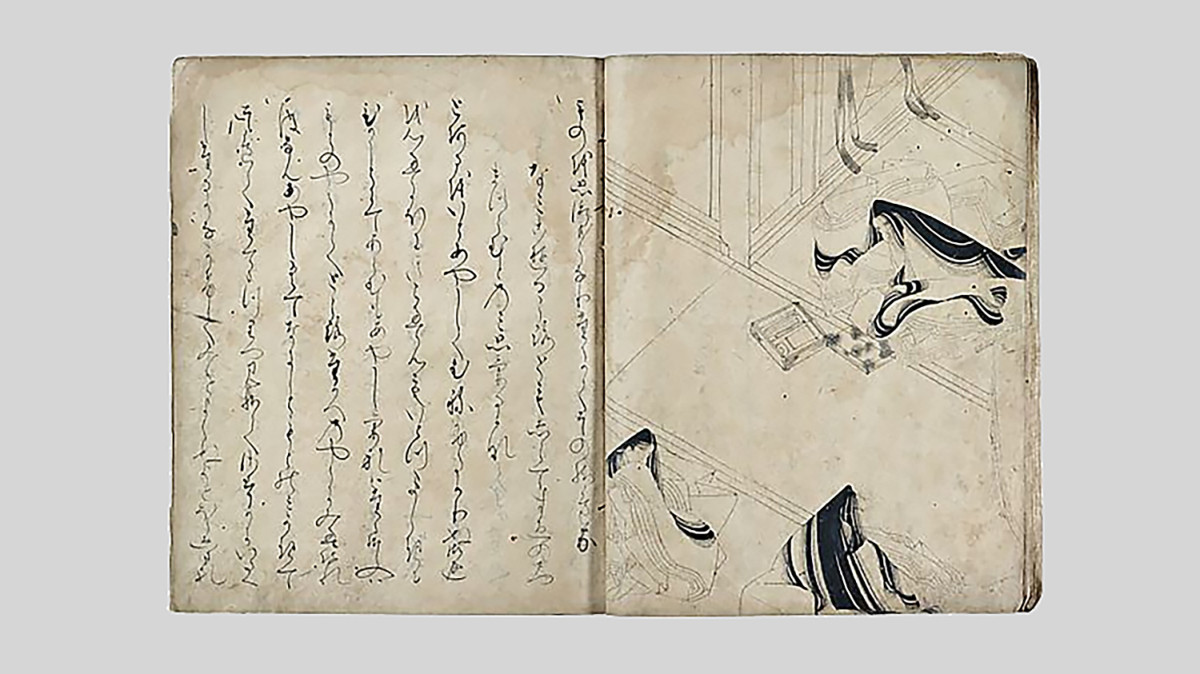Researchers Discovered a Missing Part of “The Tale of Genji,” a Novel Written by A Japanese Noblewoman in the Early 11th Century
“The Tale of Genji” is of interest due to many reasons. While the original manuscript no longer exists, it was supposedly made in Orihon style — a Japanese version of concertina binding. And it was written by a noblewoman a thousand years ago.
Lady-in-waiting Murasaki Shikibu was a Japanese novelist, poet, and member of the Imperial court during the Heian period. She was a highly educated person, and besides “The Tale of Genji,” other works are attributed to her, including numerous poems. Just a century after the novel was written, it was considered a classic and was a reason for many debates among the literary critics.
The novel tells the story of Hikaru Genji, the son of a Japanese emperor. It illuminates the internals workings of Imperial court life in Kyoto over 1,000 years ago. In Japanese, it is known as Genji monogatari (源氏物語 ), pronounced [ɡeɲdʑi monoɡaꜜtaɾi].
While the original manuscript hasn’t survived or wasn’t found in the archives yet, multiple later copies exist. The oldest of the known copies is the subject of the recent news. It was created by Fujiwara Teika, a Japanese poet, critic, calligrapher, and novelist. In the 13th century, he made one of the attempts to revise the existing copies of the manuscript and comparing the differences to devise the original version of the text.
The newly discovered manuscript belongs to Motofuyu Okochi, a descendant of the former feudal lord of the Mikawa-Yoshida Domain in Aichi Prefecture. It was reportedly found inside a large chest in the storeroom of his home in Tokyo.
The manuscript is 21.9 cm by 14.3 cm in size. It supposedly has been in the family’s possession since 1743, when it was handed down from the Kuroda family of the Fukuoka feudal domain. Experts confirmed the authenticity of the material found in one chapter of a five-chapter work called “Aobyoshibon” (blue cover book). Among other things, the blue color of the cover made experts believe that this is Teika’s copy of the manuscript.
Junko Yamamoto, a professor at the Kyoto University of Advanced Science who specializes in the literature of the Heian Period (794-1185), commented that until that find research on the “Wakamurasaki” chapter relied on manuscripts made more than two centuries after Teika’s work.
The discovered fifth chapter contains a part of the novel in which the 18-year-old protagonist encounters his future wife.
Further Reading
- Fifth chapter of oldest ‘Tale of Genji’ copy found in Tokyo — Asahi Shimbun — see the images of the found chapter here.
- Missing part of oldest ‘Tale of Genji’ manuscript discovered in Japan — The Mainichi
- Lost chapter of world’s first novel found in Japanese storeroom — The Guardian
- Japan discovers missing chapter from world’s first novel ‘Tale of Genji’ — The Telegraph
Top image: an illustrated copy of the book from the 15th century.
Please Support us on Patreon!
 The minimum level of contribution is only $1 per month.
The minimum level of contribution is only $1 per month.
Moreover, starting with the pledge level of $3, you will get a digitized vintage book about bookbinding, book history, or book arts each month from us!
These pledges help iBookBinding to continue its work and bring more information about bookbinding and book arts to you!


